| Author |
Message |
|
J. Sanford
|
 Posted: Sun 11 Jun, 2017 1:05 pm Post subject: Breastplate Mystery - more photos Posted: Sun 11 Jun, 2017 1:05 pm Post subject: Breastplate Mystery - more photos |
 |
|
Here are some more image detailing the back (inside) surface and one of a front shoulder.
 Attachment: 48.15 KB Attachment: 48.15 KB
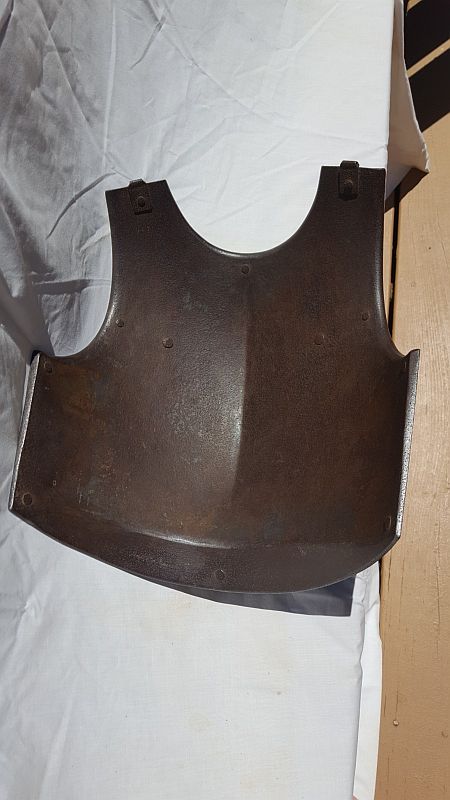
This shows the whole back (inside).
 Attachment: 75.56 KB Attachment: 75.56 KB
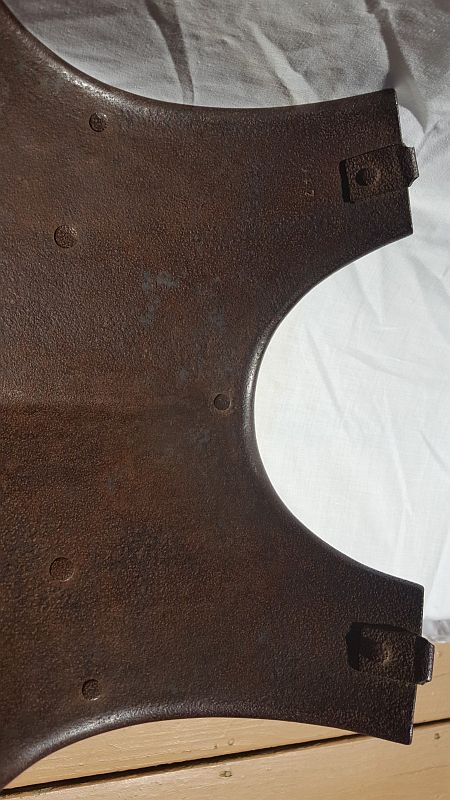
Closeup - upper half.
 Attachment: 78.96 KB Attachment: 78.96 KB
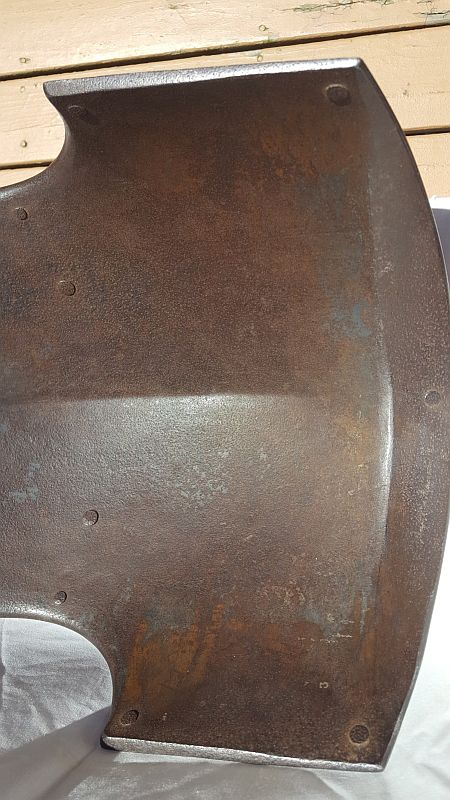
Closeup - lower half.
 Attachment: 109.95 KB Attachment: 109.95 KB
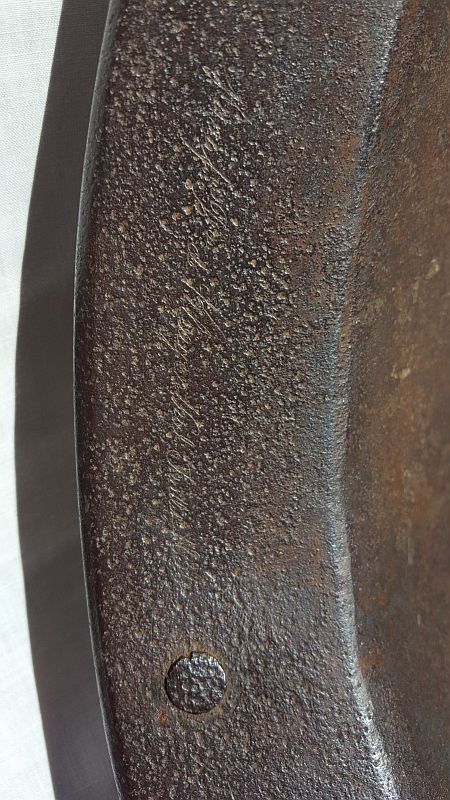
Closeup - bottom edge showing arsenal mark.
 Attachment: 93.05 KB Attachment: 93.05 KB
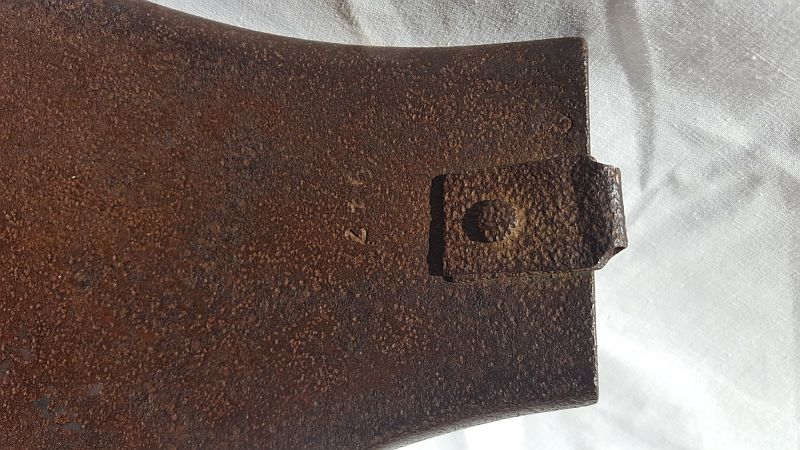
Closeup of back shoulder showing number.
 Attachment: 100.35 KB Attachment: 100.35 KB
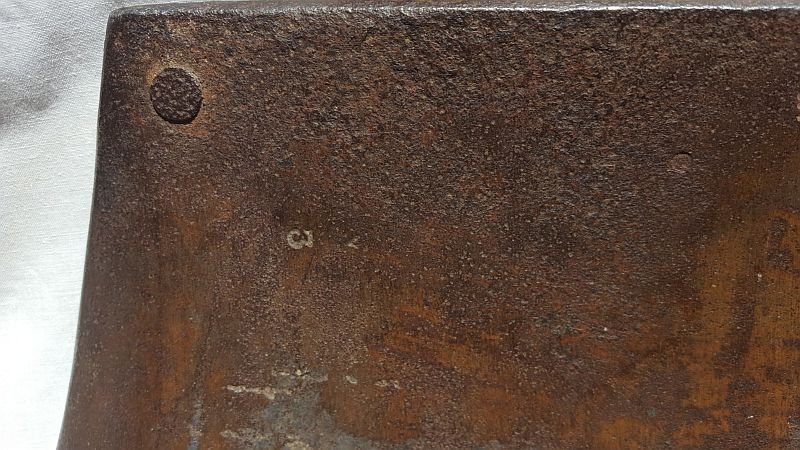
Closeup of lower left showing number.
 Attachment: 41.42 KB Attachment: 41.42 KB
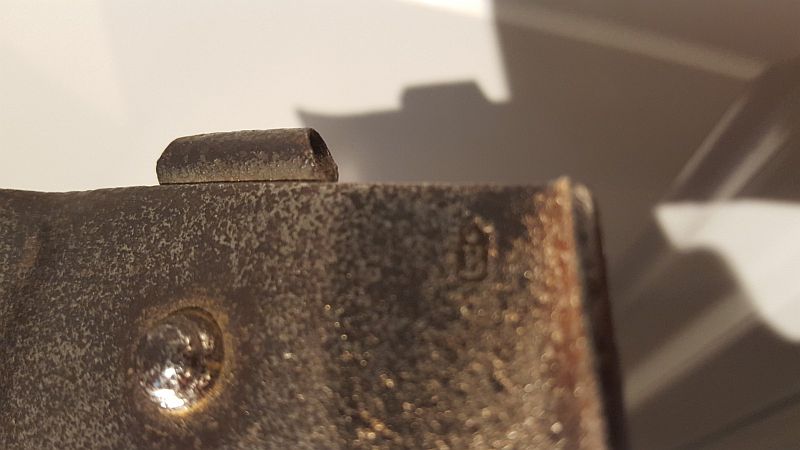
Closeup of front right shoulder showing letter B. Armouror's or inspector's mark?
|
|
   |
 |
Dan Howard

|
 Posted: Wed 21 Jun, 2017 5:02 am Post subject: Posted: Wed 21 Jun, 2017 5:02 am Post subject: |
 |
|
Looks thick enough to stop a pretty heavy round. What does it weigh? You might be right that it was modified for use in WWI. Is it a duplex construction? Does it look like two plates were welded or riveted together to create a thicker plate?
Author: Bronze Age Military Equipment, Pen and Sword Books
|
|
  |
 |
|
Zach Gordon
|
 Posted: Wed 21 Jun, 2017 6:34 am Post subject: Posted: Wed 21 Jun, 2017 6:34 am Post subject: |
 |
|
Dan Howard you keep editing your posts to say different things, I keep having to adjust and delete my responses. This is getting really annoying. First you argued it was thick enough for a musket ball, but not thick enough for a WWI rifle round, then changed it to saying it looks heavy enough, and now you have edited it to asking about construction.
I keep spending time writing a post/response then having to delete it because you have edited yours for content.
I am not going to edit this post again --so if yours now says something different, I may look silly, but my feeling is this.
If the breastplate is indeed modified just before/during WWI, I have to wonder the relevance of its thickness/weight at all. It is probable that the Germans would have re-worked it for trench warfare, particularly for use by sappers or those who might be in line for heavy artillery fire. The breastplate could indeed be unlikely to have any real protective quality against rifle rounds, but this is irrelevant when considering the protective quality required agains fragmentation grenades and other shrapnel, i.e. an early flak jacket. This is similar to the British leather jerkins in principal, but offering slightly more protection, including against pistol rounds and clubs.
I suggest sapper use though, as there are a number of breastplates (some with quite similar appearance) that come up at auction described as such. In WWII the Russians were using Steel Bibs, here is a later Red Army soldier in one in 1944.
This book has quite a bit about the symbolic and functional use of breastplates, and arguments, in Germany after 1870 where it was discussed in Parliament so might be quite relevant: The Kaiser's Army: The Politics of Military Technology in Germany during the Machine Age 1870-1918
Given the greater german affinity towards breastplates, up to and through the second world war.. I think it most likely they would be fielding older models, and re-outfiting them!
Z
|
|
  |
 |
|
Zach Gordon
|
 Posted: Wed 21 Jun, 2017 9:18 am Post subject: Posted: Wed 21 Jun, 2017 9:18 am Post subject: |
 |
|
Here we have a French WWI soldier in a cuirass that matches yours, but looks like it may still have the brass attachment points, and here is another that looks like the brass may be gone. I really reckon you have a late use cuirass, modified. The French, like the Germans, continued using these through to 1917.. More images are around! Check this article: http://www.westernfrontassociation.com/the-gr...our-1.html
Z
|
|
  |
 |
|
J. Sanford
|
 Posted: Wed 21 Jun, 2017 8:03 pm Post subject: Posted: Wed 21 Jun, 2017 8:03 pm Post subject: |
 |
|
| Dan Howard wrote: | | Looks thick enough to stop a pretty heavy round. What does it weigh? You might be right that it was modified for use in WWI. Is it a duplex construction? Does it look like two plates were welded or riveted together to create a thicker plate? |
The thickness is as originally constructed in 1831. No additional plates have been welded or riveted.
|
|
   |
 |
|
J. Sanford
|
 Posted: Wed 21 Jun, 2017 8:19 pm Post subject: Posted: Wed 21 Jun, 2017 8:19 pm Post subject: |
 |
|
| Zach Gordon wrote: | Here we have a French WWI soldier in a cuirass that matches yours, but looks like it may still have the brass attachment points, and here is another that looks like the brass may be gone. I really reckon you have a late use cuirass, modified. The French, like the Germans, continued using these through to 1917.. More images are around! Check this article: http://www.westernfrontassociation.com/the-gr...our-1.html
Z |
After considerable searching I have been unable to find an image that matches the modifications. From the research I've done your suggestion regarding a German rework seems quite possible especially since some sources indicate that German cuirassiers stopped wearing a backplate around 1900 and the breastplate has been modified for use without the backplate.
|
|
   |
 |
Dan Howard

|
 Posted: Thu 22 Jun, 2017 3:18 am Post subject: Posted: Thu 22 Jun, 2017 3:18 am Post subject: |
 |
|
| J. Sanford wrote: | | Dan Howard wrote: | | Looks thick enough to stop a pretty heavy round. What does it weigh? You might be right that it was modified for use in WWI. Is it a duplex construction? Does it look like two plates were welded or riveted together to create a thicker plate? |
The thickness is as originally constructed in 1831. No additional plates have been welded or riveted. |
Some breastplates from the 17th century onwards were made from a duplex construction.
Author: Bronze Age Military Equipment, Pen and Sword Books
|
|
  |
 |
|
John Cope
|
 Posted: Fri 23 Jun, 2017 10:26 am Post subject: Posted: Fri 23 Jun, 2017 10:26 am Post subject: |
 |
|
Interesting adaptations. Looks like a nice piece.
A quick image search of other Klingenthal BPs show similar holes at the shoulders. It may have been converted to a buckle system similarly seen on 16th/17th century breastplates.
For what reason, who knows?
Decorative? Many breastplates (of all eras) are converted to wall hangers and you need some method to attach wire or rings on a BP to mount it on the wall. The other details may have been stripped away to make the BP appear to be an older one to the untrained eye.
To use? Why change the mounting system when it is already a proven one? Perhaps not to look "old fashioned" on the field or interfere with the other gear and clothing you are required to use. Or possibly to conceal it lest one be accused of cowardice. One concern that breast plates have for line troops is that it can be difficult to shoulder a rifle and accurately fire it with one on.
One question that could be asked is: how much ballistic protection would a Breastplate designed for low velocity black powder lead ball provide against high velocity smokeless powder driven jacketed rifle rounds? Perhaps at longer ranges it would help and certainly defend against flying shrapnel and debris BUT at a cost of mobility.
Armour use in WWI was mostly used by designated troops such as Machine gunners and Snipers where mobility is not a concern. We have two German Articulated Breast Plates in the collection of the museum I work in. The one for the sniper has much larger armholes so that you could use a rifle properly.
Bashford Dean of the Met explored the possibilities of armouring troops in 1917 http://www.metmuseum.org/blogs/now-at-the-met...orld-war-i The book is out there as a PDF and a good read. Ultimately he concluded that with the metals available in the day that it was make thick enough to be effective it was too heavy to be practical...enter the TANK! 
|
|
  |
 |
|
Zach Gordon
|
 Posted: Fri 23 Jun, 2017 3:43 pm Post subject: Posted: Fri 23 Jun, 2017 3:43 pm Post subject: |
 |
|
| John Cope wrote: | | Ultimately he concluded that with the metals available in the day that it was make thick enough to be effective it was too heavy to be practical...enter the TANK! |
Except we know, for a fact, that breastplates/cuirasses were worn during the early part of the war. The French cuirassiers wore them, extensively. Keep in mind the famous quote about the great war: "the war in which soldiers rode in on the backs of horses and left in the bellies of steel beasts". The French, the Germans, the English.. all went in prepared for a classic war not too far from the Napoleonic, with swords, horses, and cuirasses. The question here is the modifications. The French wore ones of this exact type, there is photographic documentation, it just seems that in the photos they retain the brass decorations and backplates. Also we know there were others used/experimented with.. and privately purchased.
I will say, however, that I have read, like the Germans covering their pickelhaube helmets in drab cloth, the same was done to cuirasses. It is in one of those links I posted above. There was a gradual transition away from the cuirass, and I presume that it was sometime during this that the brass decoration/backplate was removed. Perhaps this exact one had a drab cover now missing!
Z
|
|
  |
 |
|
|
You cannot post new topics in this forum
You cannot reply to topics in this forum
You cannot edit your posts in this forum
You cannot delete your posts in this forum
You cannot vote in polls in this forum
You cannot attach files in this forum
You can download files in this forum
|
All contents © Copyright 2003-2024 myArmoury.com — All rights reserved
Discussion forums powered by phpBB © The phpBB Group
Switch to the Basic Low-bandwidth Version of the forum
|

